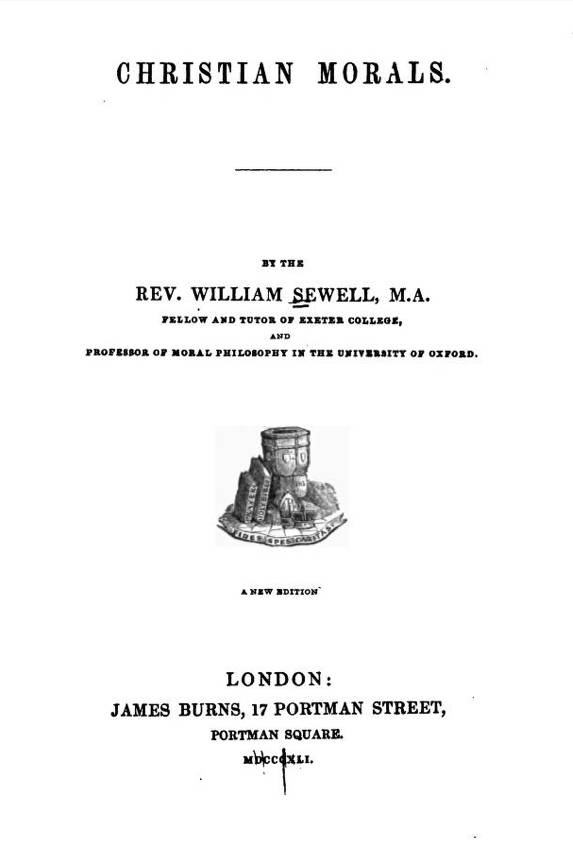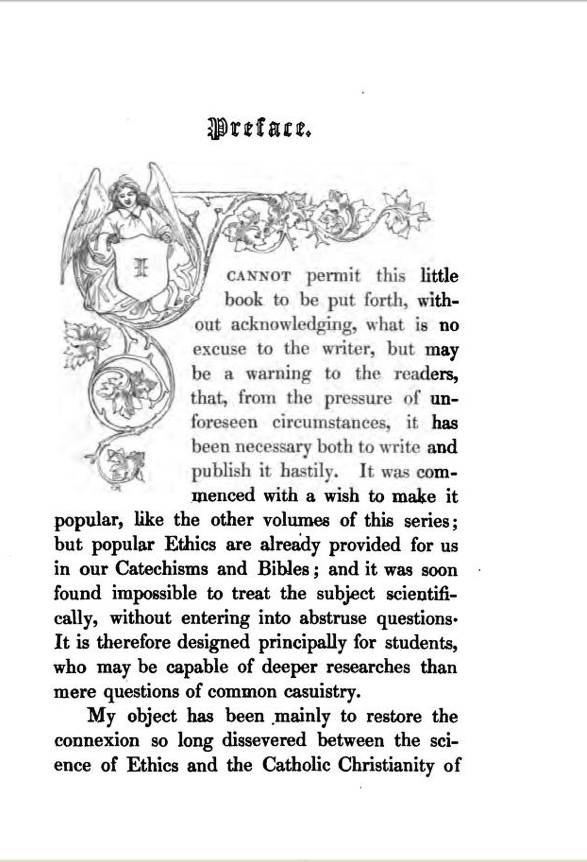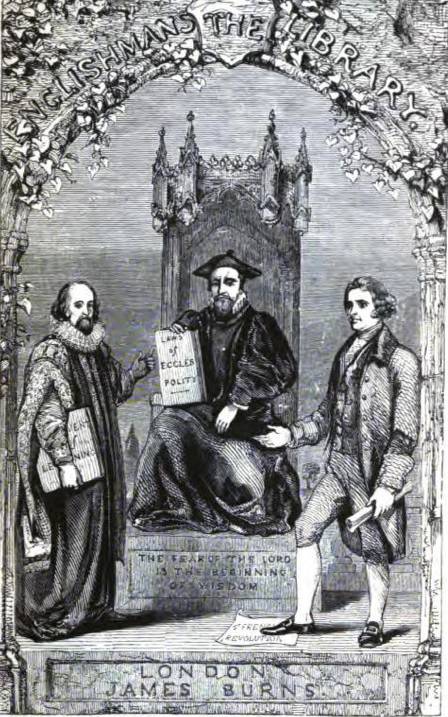William Sewell (1804-1874) was born and brought up at Newport, Isle of Wight, the second son of Thomas Sewell, a prominent solicitor. William had five brothers and six sisters, among them Henry Sewell, first premier of New Zealand, James Edwards Sewell, Warden of New College, Oxford, from 1860 until 1903, and the novelist Elizabeth Missing Sewell.
William Sewell attended Winchester College from 1819 to 1822, and then matriculated at Merton College, Oxford, where he held a postmastership until 1827. He took first-class honours in literae humaniores. In 1827 Sewell was elected Petrean Fellow of Exeter College, Oxford, winning the Chancellor's Prize for the English essay in 1828 and for the Latin essay in 1829. He was ordained in 1831 and served various curacies. In 1831 he was appointed Tutor at Exeter College and from 1836 to 1841 was Whyte's Professor of Moral Philosophy. His professorial lectures were revised and published in 1840 as Christian Morals and Christian Politics, followed in 1841 by An Introduction to the Dialogues of Plato.
Sewell's steadfast high-churchmanship brought him into natural sympathy with the emerging Oxford Movement, and resulted in his earliest polemical writing in pamphlets such as The Attack upon the University of Oxford, in a Letter to Earl Grey (1834), Thoughts on the Admission of Dissenters to the University of Oxford (1834), and Postscript to Thoughts on Subscription (1835). However, he was vehemently anti-Catholic and abhorred Newman's Tract 90 of 1841, explaining his position in a succession of pronouncements and sermons such as The Duty of Young Men in Times of Controversy (1843), intended to counter tractarianism's Romeward direction.
"Sewell of Exeter" gained the highest reputation as a tutor in these years. His devoted pedagogy was the personification of his wider arguments for university reform, expressed in such satirical material as his anonymous The University Commission, or, Lord John Russell's Postbag, which appeared in four instalments in 1850.
The most important expression of Sewell's educational vision, however, was his conviction of the need to establish schools which could serve as nurseries of sound religion. St. Columba's College was intended to promote high-church principles and to aid the conversion of Irish Catholics through the use of the Irish language, and to furnish the gentry of Ireland with a school on the model of Winchester or Eton. Sewell published his account of the experience, Journal of a Residence at the College of St Columba, in Ireland, in the spring of 1847, in order to prepare the way for Radley which opened on 18 August 1847. Sewell himself served as warden between 1853 and 1861, assisted by his brother Robert.



Three pages from Sewell's Christian Morals — left to right: (a) Title-page. (b) Preface with decoration showing the influence of German illustration. (c) Frontispiece to the series, “The Englishman's Library” showing three British worthies: Francis Bacon with The Advancement of Learning representing natural philosophy, the seated Richard Hooker displaying his The Laws of Ecclesiastical Polity representing theology, and Edmund Burke trampling a sheet on which appears the world “The French Revolution” thereby representing political theory and practice. [Click on these images for larger pictures.]
Sewell served as preacher at Whitehall in 1850, and select preacher at Oxford in 1852. In addition to numerous published single sermons he issued a number of collections, such as Sermons on the Application of Christianity to the Human Heart (1831), Parochial Sermons on Particular Occasions (1832), Sermons Addressed to Young Men (1835), and The Character of Pilate and the Spirit of the Age (1850). A miscellany of Sewell's school sermons appeared in 1854 as A Year's Sermons to Boys, Preached in the Chapel of St Peter's College, Radley, followed by a second collection in 1859, and a third in 1864. Sewell's reviews and sermons were described by a contemporary as: "They tell one nothing, they mean nothing, they are nothing, but they go down like bottled velvet".
Sewell was also a prolific author in the rapidly expanding field of religious fiction. Hawkstone: a Tale of and for England in 184- published anonymously in 1845, which ran through numerous editions, is chiefly remembered for the wildly sensationalist tone of its emphasis on the church's lost social functions, its hostility to manufacturing and the commercial spirit, and its hysterical anti-Jesuitism. He also served as 'editor' or anonymous co-author for many works by his sister, Elizabeth, including Uncle Peter's Fairy Tales (1844), Uncle Peter's Tale for the Nineteenth Century (1868). Her Amy Herbert (1844) and Gertrude (1846) duly embodied high-church views, while Laneton Parsonage: a Tale for Children (1846-49) was intended to encourage the use of the catechism, and was followed by the anti-secessionist Margaret Percival (1847). Sewell himself also issued a volume of poetry, A Clergyman's Recreation, or, Sacred Thoughts, in Verse (1831), written mostly during his curacy at Whippingham and inspired by Keble's Christian Year.
Sewell's health, as well as his finances, had been broken by his years as warden of Radley, and after his resignation in 1861, with his fellowship at Exeter sequestrated, he moved about for several years, principally between Bonchurch on the Isle of Wight, where three of his sisters had opened a school, and London. He later travelled throughout Germany, Belgium, and Luxembourg, before in 1866 taking up residence at Deutz, on the Rhine, where he worked on new translations of the Iliad and the Odyssey, and a new metrical version of the Psalms, which were left unpublished at his death. The Microscope of the New Testament, the principal work of these years, appeared posthumously in 1878 edited by his friend the Revd W. J. Crichton, whose sons had been among the first boys at Radley. He died peacefully at the residence of his nephew the Rev'd Arthur Sewell (OR), at Litchford Hall, near Manchester, on 14 November 1874, and was buried in St Andrew's churchyard, Blackley, Manchester.
Last modified 29 January 2013